ssdd
Hazard to Others
  
Posts: 211
Registered: 13-4-2007
Location: Central Canada
Member Is Offline
Mood: Hypergolic
|
|
Lightning Photography
So recently I have been doing some work with trying to capture lightning on film (both video and long term exposures).
So I thought I would share some of my better images to date. (they have all been resized to reduce load time)
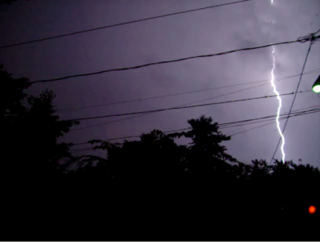
Southern New Jersey, Aug 28 2009

Elmira NY, July 2009
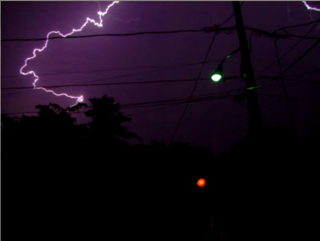
Southern New Jersey, Aug 18 2009
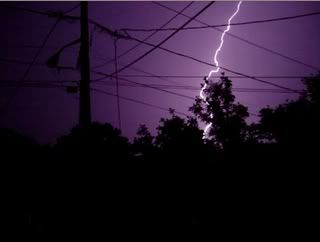
Southern New Jersey, Aug 18 2009
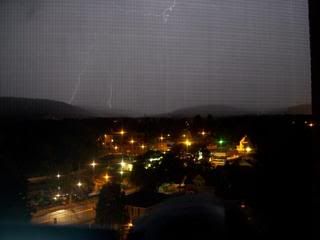
Elmira NY, July 2009
All but the last image were obtained by recording the storm with a digital camera then going through, finding a strike, then frame by frame find the
best image of the bolt.
The last image was taken with a 3 second exposure.
My equipment is limited (Kodak C643 and a small Sony HD camcorder) so I was wondering if anyone else here has any experience in doing anything similar
or could provide input on how to obtain better images (other than buy better equipment).
-ssdd
All that glitters may not be gold, but at least it contains free electrons.
-- John Desmond Baernal
http://deepnorth.info/ |
|
|
12AX7
Post Harlot
    
Posts: 4803
Registered: 8-3-2005
Location: oscillating
Member Is Offline
Mood: informative
|
|
I might recommend a long exposure. The trouble is, you have to set the iris really narrow, otherwise the camera is completely blinded.

This photoflash photograph was taken with a long exposure (a second or so, enough to see the random flash trigger once) under ambient lighting
conditions.
I first tried the same approach with lights off, to emphasize the scene being lit only by the flash tube: bad idea, the whole picture was a blue-white
blur. I don't think I can manually set the iris on my camera, so I guess I won't be able to take that shot.
Tim
|
|
|
hodges
National Hazard
   
Posts: 525
Registered: 17-12-2003
Location: Midwest
Member Is Offline
|
|
Here is a time exposure I took about 4 years ago, in the Buffalo, NY area:
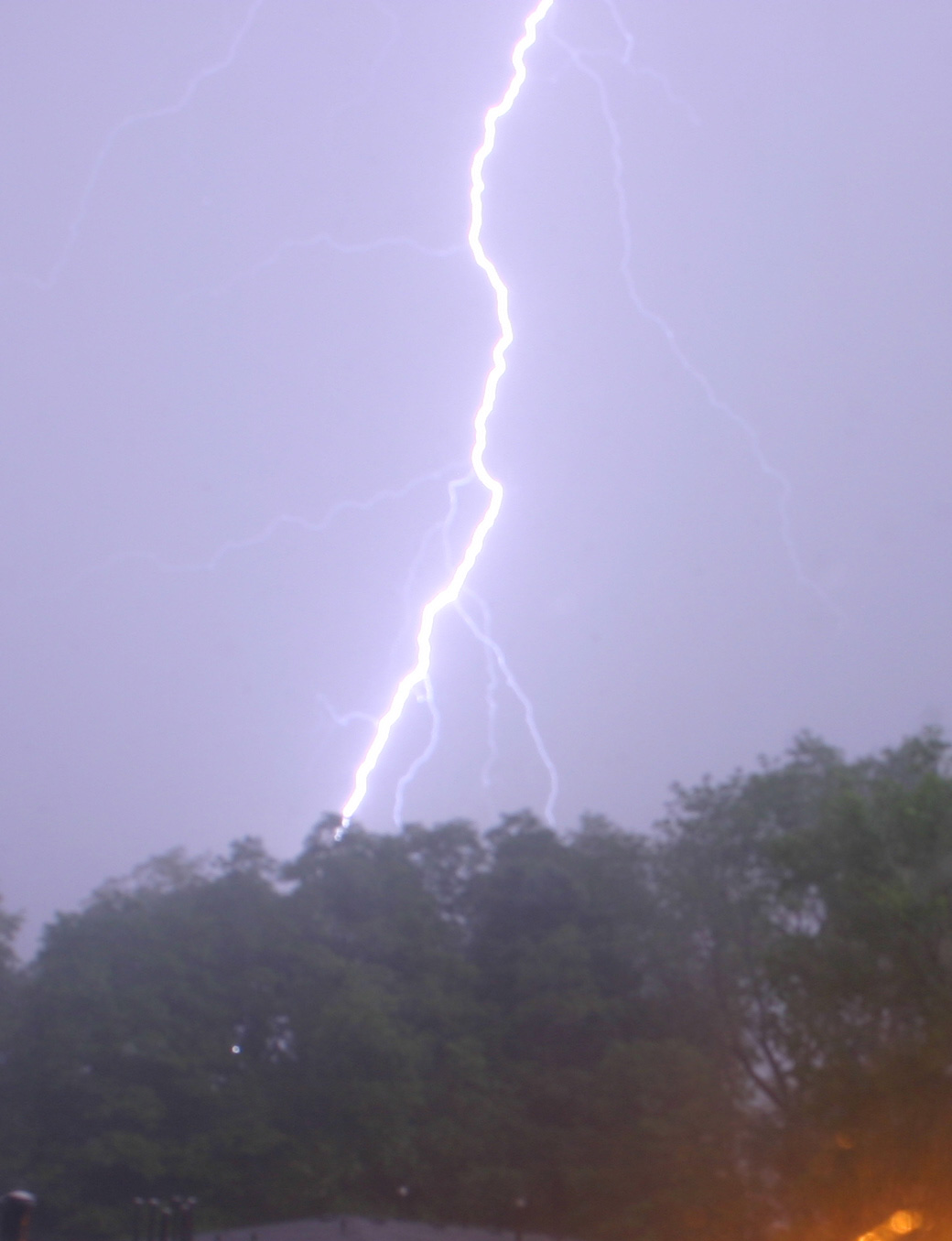
Hodges
|
|
|
hissingnoise
International Hazard
    
Posts: 3940
Registered: 26-12-2002
Member Is Offline
Mood: Pulverulescent!
|
|
Wow! I can almost smell the ozone---or is nitrogen dioxide. . .
It looks like a long lens, too, and that makes it even more difficult!
|
|
|
watson.fawkes
International Hazard
    
Posts: 2793
Registered: 16-8-2008
Member Is Offline
Mood: No Mood
|
|
There's lots of stuff on the internet about this. The one physical fact I hadn't known is that there's a flash in the infrared from the leaders before
there's the big one that's visible. An infrared sensor that looks for that flash can trigger the shutter in plenty of time to catch the main stroke.
Circuits of various complexity abound.
As for exposure control, consider rigging up a pair of polarizing filters in addition to the aperture. It's another way of extinguishing unwanted
light, with the added advantage that you can increase contrast in the daytime by setting the angles appropriately.
|
|
|
ssdd
Hazard to Others
  
Posts: 211
Registered: 13-4-2007
Location: Central Canada
Member Is Offline
Mood: Hypergolic
|
|
Yea to date I have had some issues with the camera being blinded
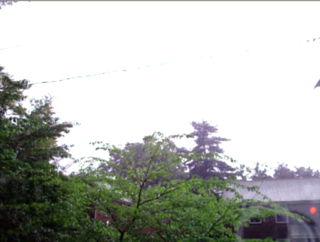
(This is the same bolt as the first image in my original post, but one frame of video earier)
So while video gives me the option of several frames of the strike the first strike is usually the one with the most interesting details and those are
lost.
But the disadvantage to video is also that the camera takes a moment to adjust (its also a crappy camera for this work (the kodak that is))
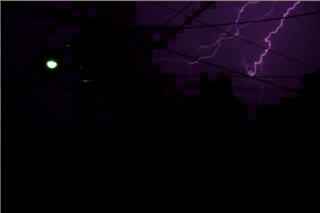
As you can see I got a nice shot of a bolt here, but the massive pixelation in the rest of the image had made it damn near worthless.
I do like the idea of the polarized lenses, I had never thought of those before for reducing the brightness of near-by strikes. (Also the idea of
being able to take long term shots in the daytime would be amazing) I would just have to figure out how to rig lenses to my cheap kodak. (which I also
believe has no ability to add a circuit to take a picture unless i mod it which im trying to avoid at the moment)
-ssdd
(ps, nice shot hodges, getting good storm shots further south east of buffalo (eg elmira where i goto school) is a crap shoot since the mountains make
the weather patterns to random)
[Edited on 2-9-2009 by ssdd]
All that glitters may not be gold, but at least it contains free electrons.
-- John Desmond Baernal
http://deepnorth.info/ |
|
|
hinz
Hazard to Others
  
Posts: 200
Registered: 29-10-2004
Member Is Offline
Mood: No Mood
|
|
Very nice video of a lightning filmed with a lot of FPS:
http://www.youtube.com/watch?v=_X_7YRVGvtA
|
|
|
franklyn
International Hazard
    
Posts: 3026
Registered: 30-5-2006
Location: Da Big Apple
Member Is Offline
Mood: No Mood
|
|
Just a thought , you might try rigging the audio output headphone jack of an AM radio receiver
to trigger the shutter with the noise signal produced by the bolt. Lightning produces a broadband
amplitude modulated ( AM ) electro magnetic frequency ( EMF ) pulse. Tune the radio to the
quietest spot towards the high end of the AM band , set the volume to barely audible and rely on
the high amplitude spike to trigger the shutter.
This is how lightning activity is detected and recorded nationwide
http://gcmd.nasa.gov/records/GCMD_NLDN.html , Click to View Full Summary
http://www.lightningsafety.noaa.gov/resources/Lightning_Detection.p...
Lightning tracking service and forewarning
http://thunderstorm.vaisala.com/explorer.html
related thread
http://www.sciencemadness.org/talk/viewthread.php?tid=8999
One practitioners experience
http://www.uscoles.com/phlightn.htm
Lightning detectors
http://www.techlib.com/electronics/lightning.html
http://www.electronics-lab.com/projects/science/001/index.html
http://www.timbitson.com/Weather_Projects_files/owlm.pdf
http://www.emc-seminars.com/Technical_Articles/files/ESD_Detector_W...
This is a setup for photographing elusive wild game , it triggers by proximity sensing of infrared
but illustrates the basic wiring scheme used with cameras.
http://www.jesseshunting.com/site/rs-49-425.html
* Motion sensor cheaply available at Harbor Freight
http://www.harborfreight.com/cpi/ctaf/displayitem.taf?Itemnumber=95...
This other device uses a photodetector
http://www.lightningtrigger.com
http://www.lightningtrigger.com/PhotoTips6/PhotoTips6.htm
DIY
http://www.solorb.com/elect/lightning/index.html
http://home.cogeco.ca/~rpaisley4/PhotoDetectors.html
http://www.astro.uni-bonn.de/~kbagschi/blitze.shtml
http://en.wikipedia.org/wiki/Lightning_detection
To descriminate false RF signals , RF and Optical devices are used together
scroll down to - Professional-quality portable lightning detector - see “coincidence circuit”
Lightning predictor
http://electroschematics.com/1021/lightning-detector
An ideal setup will have internet feed of lightning forecasts along with a sensor
to detect high local static electric presence to warn of possible lightning. Then
dual sensors of say an infrared proximity detector directed into a gold parabolic
mirror pointed in the same direction as the camera's field of view , the other
" sensor " will be the AM radio. The output of each sensor coincide at an
" and " gate the output of which triggers the camera shutter. When an
event is recorded the system resets.
Below a short article on an AM detector from my archived issue of the now defunct
Electronics Now magazine
.
Attachment: Lightning detector 1.zip (441kB)
This file has been downloaded 430 times
|
|
|